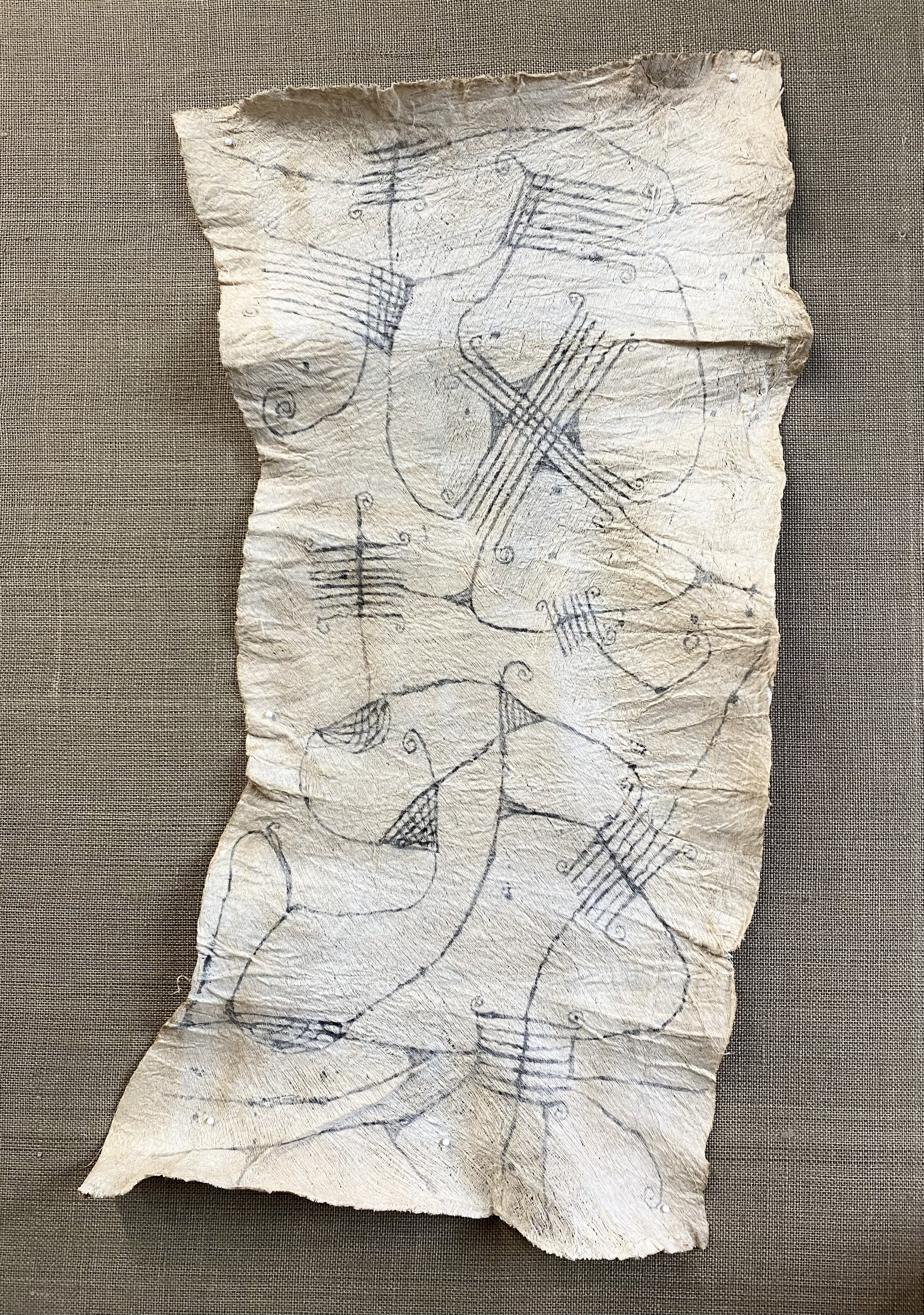 Image 1 of 2
Image 1 of 2

 Image 2 of 2
Image 2 of 2



Mbuti Bark Cloth Drawing
The Mbuti are one of several tribes of hunter-gatherers collectively referred to as "Pygmies" by outsiders. They are indigenous to the Ituri Rainforest, in the Democratic Republic of Congo (formerly Zaire) in equatorial Africa. An ancient and semi-nomadic culture, the Mbuti make art that is highly portable: complex polyphonic music, dance, body-painting, and these drawings.
The bark is collected in the forest, and initially processed, by the men. The women then take over, softening the material and decorating it with natural forest pigments. Usually, two women collaborate on a design, utilizing motifs similar to those used in body-painting (second image). The resulting compositions can resemble a view of the earth from above, a view of the night sky, or abstractions of natural patterns of foliage, animal tracks, and other textures of the forest. These cloths were traditionally worn as skirts or loincloths for important dances. They were also used to swaddle infants, the protection of the bark a manifestation of the nurturing forest itself.
The art of the Mbuti was entirely ephemeral until coming to the attention of Western collectors in the 1980s. The 1996 book Mbuti Design: Paintings by Pygmy Women of the Ituri Forest, by Georges Meurant and Robert Thompson, helped these elemental abstractions gain wider attention; as did an early exhibition at the University of California, Berkeley Art Museum, called An Eternity of Forest: Paintings of Mbuti Women.
Approximately 15” wide by 30” tall.
The Mbuti are one of several tribes of hunter-gatherers collectively referred to as "Pygmies" by outsiders. They are indigenous to the Ituri Rainforest, in the Democratic Republic of Congo (formerly Zaire) in equatorial Africa. An ancient and semi-nomadic culture, the Mbuti make art that is highly portable: complex polyphonic music, dance, body-painting, and these drawings.
The bark is collected in the forest, and initially processed, by the men. The women then take over, softening the material and decorating it with natural forest pigments. Usually, two women collaborate on a design, utilizing motifs similar to those used in body-painting (second image). The resulting compositions can resemble a view of the earth from above, a view of the night sky, or abstractions of natural patterns of foliage, animal tracks, and other textures of the forest. These cloths were traditionally worn as skirts or loincloths for important dances. They were also used to swaddle infants, the protection of the bark a manifestation of the nurturing forest itself.
The art of the Mbuti was entirely ephemeral until coming to the attention of Western collectors in the 1980s. The 1996 book Mbuti Design: Paintings by Pygmy Women of the Ituri Forest, by Georges Meurant and Robert Thompson, helped these elemental abstractions gain wider attention; as did an early exhibition at the University of California, Berkeley Art Museum, called An Eternity of Forest: Paintings of Mbuti Women.
Approximately 15” wide by 30” tall.